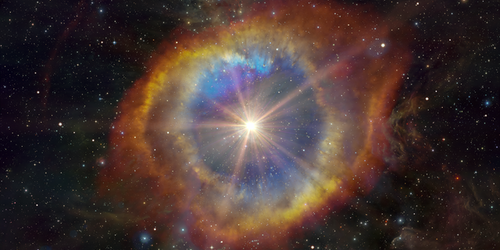Resolving Discrepancies in X-Ray Astronomy
NASA’s Chandra X-ray Observatory, and other space telescopes, detects radiation emitted by the hot astrophysical plasmas that lie in supernovae or galaxy clusters. Some of the strongest x-ray emission lines originate from a highly ionized iron species called Fe XVII, whose two strongest x-ray lines astrophysicists use to determine the plasma’s temperature, density, and other conditions. For decades, however, the measured intensity ratio of these lines has disagreed with theoretical models. In a step toward resolving that discrepancy, Steffen Kühn at the Max Planck Institute for Nuclear Physics, Germany, Chintan Shah at NASA Goddard Space Flight Center, Maryland, and their colleagues measured the energy and intensity of spectral lines emitted by Fe XVII with 10 times higher spectral resolution than previous efforts. Their measurements still differ significantly from theoretical predictions, providing confidence that models, not experiments, need revision.
The team used an electron-beam ion trap to generate Fe XVII. They then irradiated the ions with polarized photons, causing the ions to emit x rays, which they recorded using three methods. Each method revealed the intensities of Fe XVII’s two key emission lines. By taking a weighted average of each line’s intensity, the team found a signal ratio of 3.09. This value supports many early astrophysical and laboratory observations. However, the value still deviates by 5 standard deviations from theoretical predictions of astrophysical spectral emissions.
Until this discrepancy is resolved, the team’s value could be used to empirically correct spectral models of astrophysical observations and revise estimations of plasma turbulences and opacities. For example, the x-ray imaging mission XRISM, a joint US-Japan effort scheduled for 2022, will require improved spectral modeling tools to maximize its scientific output. The new measurements could help provide those tools.
This research is published in Physical Review Letters.
–Rachel Berkowitz
Rachel Berkowitz is a Corresponding Editor for Physics based in Seattle, Washington, and Vancouver, Canada.




